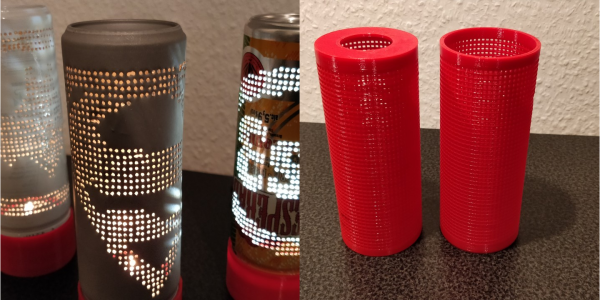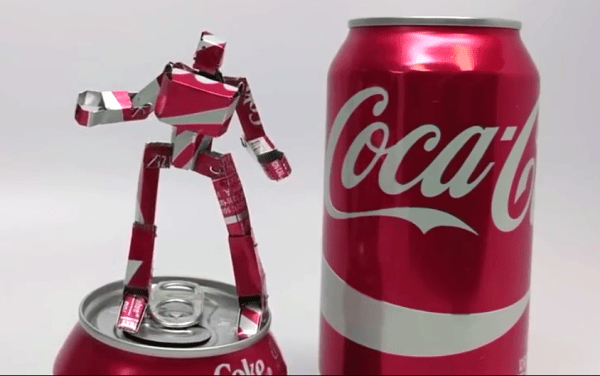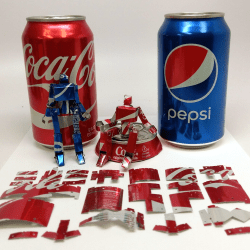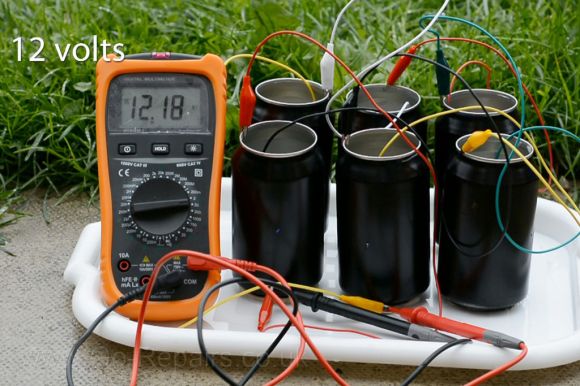If there’s any one thing that the average hacker is short on at a given moment (besides chips), it’s transient small part storage. Just as new projects are built from small parts, diagnostics and teardowns of commercial equipment invariably result in small parts. We think [amenjet] may have the answer — small parts holders made from the bottoms of soda cans.
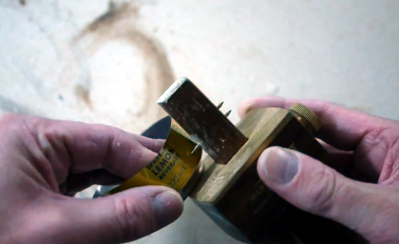 You start by cutting the bottom off of an empty can however you like. In the first video after the break, [amenjet] scores the can on what could be a purpose-built jig before cutting along the line with tin snips, but you could use regular scissors if that’s all you have. Then it’s just a matter of shoving it into the circle around the perimeter of the print to secure the sharp edge.
You start by cutting the bottom off of an empty can however you like. In the first video after the break, [amenjet] scores the can on what could be a purpose-built jig before cutting along the line with tin snips, but you could use regular scissors if that’s all you have. Then it’s just a matter of shoving it into the circle around the perimeter of the print to secure the sharp edge.
The underside of the print is graduated and ends with a small hole fit for a disc magnet. To keep the prints from scratching the table, [amenjet] covered the bottoms with crushed velvet. After making about a dozen of these things, they CNC’d a tray to hold three of them, which you can see in the second video. Each cavity in the tray is lined with more crushed velvet for elegance and stability.
Between the concavity of the can bottom and that little lip, it should be particularly easy to actually retrieve a tiny part from the pile and grab on to it. Between the utility and the recycled aspect, this could easily be an entry into the second Challenge of the 2022 Hackaday Prize, which runs now until Sunday, June 12th. This round is all about reusing, recycling, and revamping anything and everything to keep it out of the landfill. Start your entry today!
Continue reading “Bottoms Up: Soda Can Help With Almost Any Project”




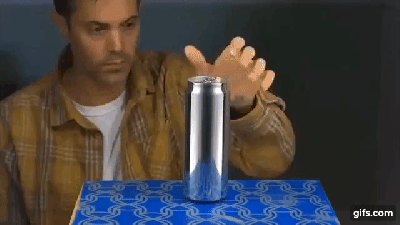 A can of soda costs about half a dollar, and once you’re done with the sugary syrup, most cans end up in the trash headed for recycling. Some folks re-use them for other purposes, but we’re guessing no one up-cycles them quite like artist [Noah Deledda] does. He turns them into pieces of
A can of soda costs about half a dollar, and once you’re done with the sugary syrup, most cans end up in the trash headed for recycling. Some folks re-use them for other purposes, but we’re guessing no one up-cycles them quite like artist [Noah Deledda] does. He turns them into pieces of 